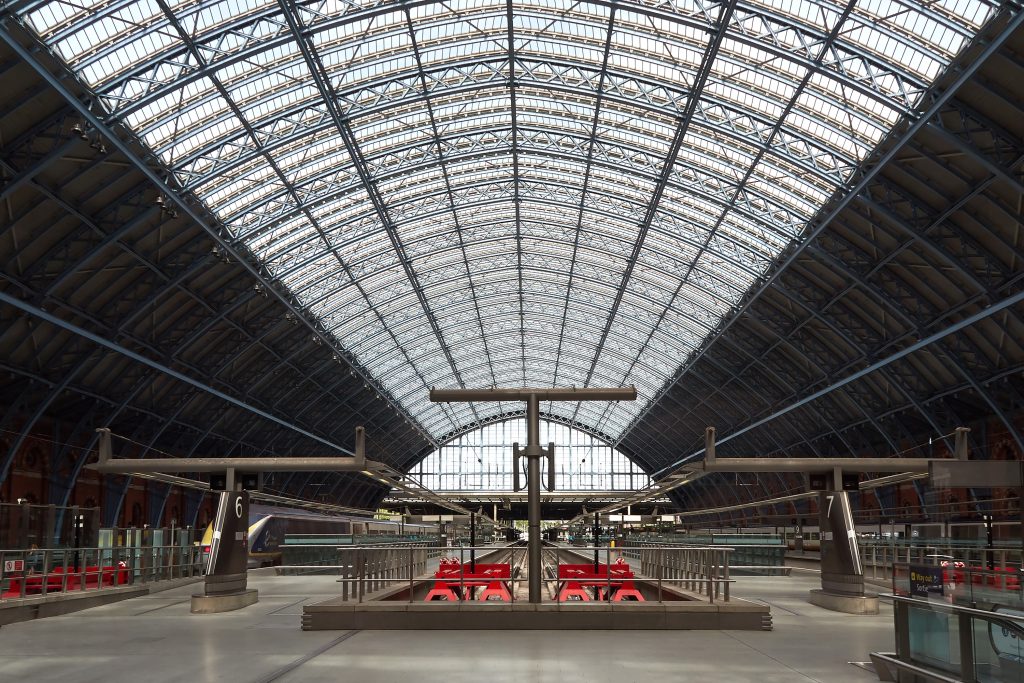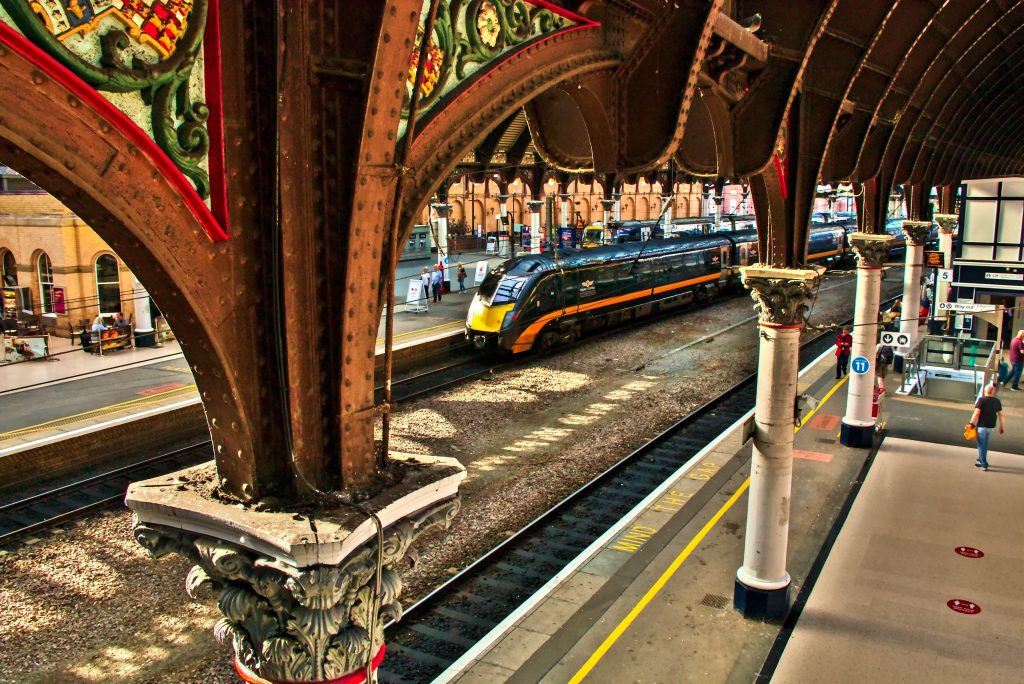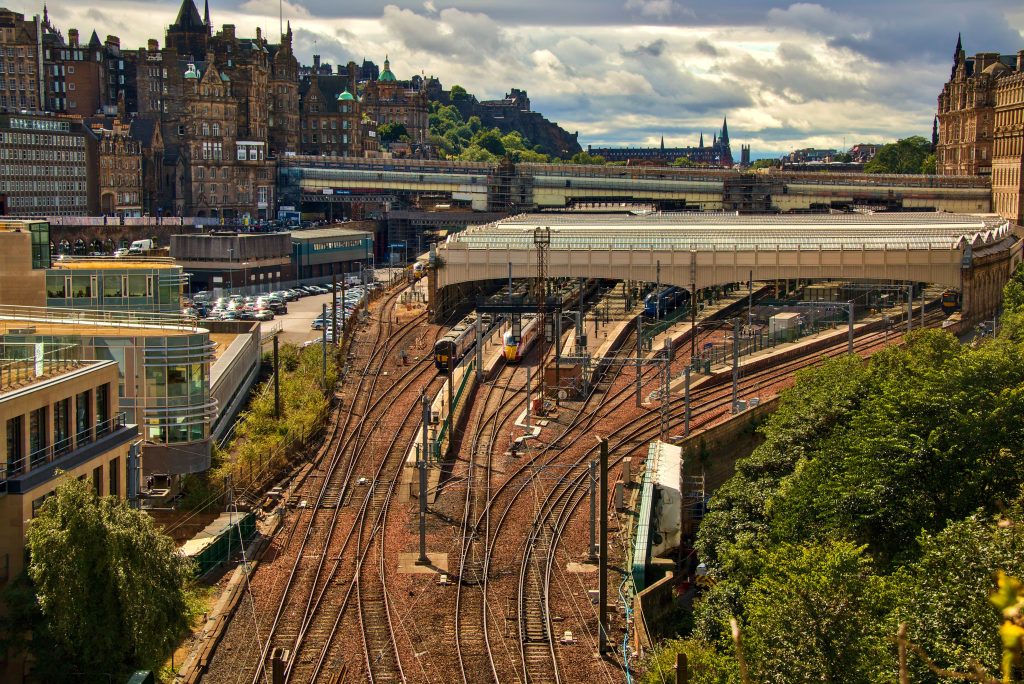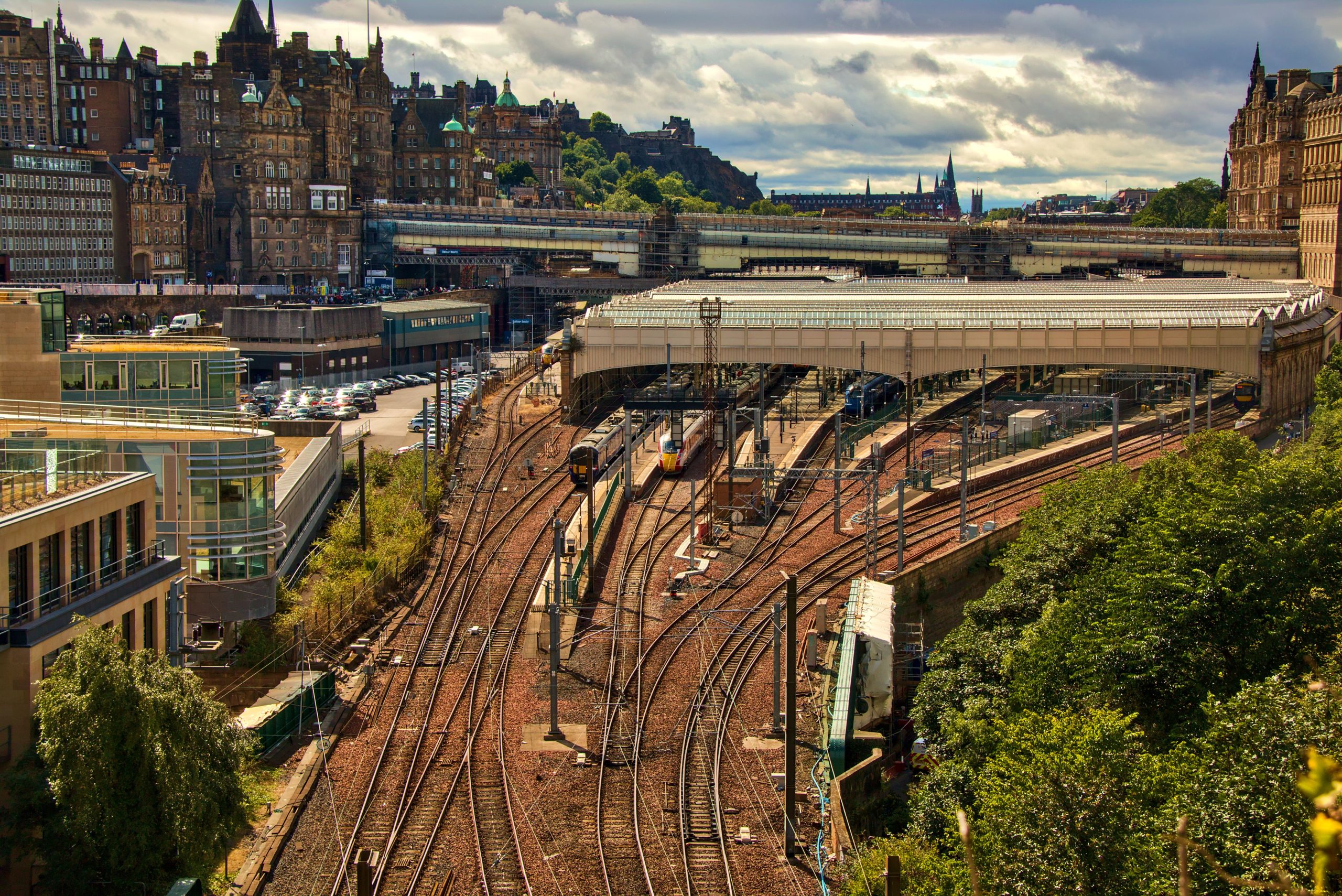The railway boom of the Victorian Era transformed transportation and reshaped Britain. These stations weren’t merely travel hubs; they were architectural landmarks, civic symbols, and monuments to an era that prized progress and grandeur.
Today, many of these historic stations are still in operation, letting you step directly into the past while catching a modern train. Here’s how to travel Britain while walking in the footsteps of Victorian passengers.

London St Pancras: Gothic Grandeur on the Tracks
Opened in 1868, St Pancras Station is one of Britain’s most stunning Victorian buildings. With its soaring iron and glass roof, neo-Gothic façade, and adjoining Midland Grand Hotel, it’s a masterpiece of engineering and design. Today, it’s the gateway to Europe via Eurostar, blending history and high-speed travel.

York Station: A Northern Powerhouse
When it opened in 1877, York Station was the largest in the world. Its curved roof and long platforms reflect the bold ambition of Victorian rail. Located near the National Railway Museum, it’s ideal for train lovers who want to dive deep into the history of British locomotion.
Bristol Temple Meads: Brunel’s Original Vision
Designed by the legendary Isambard Kingdom Brunel, Bristol Temple Meads is one of the oldest surviving railway stations in the UK. The original 1840 building still stands beside its later Victorian expansions. A visit here offers insight into early railway travel, with original wooden platforms and historic signage.

Edinburgh Waverley: A Capital Connection
Tucked in a valley between Edinburgh’s Old and New Towns, Waverley Station opened in the 1860s and remains a key transport hub. Its Victorian ironwork and glass canopy create a dramatic setting beneath the city’s skyline — the perfect blend of industrial might and romantic charm.
Paddington Station: Where Past Meets Present
Another Brunel creation, Paddington Station, opened in 1854 and is still one of London’s busiest terminals. Its iconic arched roof and original Victorian features give it a timeless feel. For fans of history and engineering, it’s a must-see — and yes, it’s also home to Paddington Bear.
Why It Matters
Visiting these stations isn’t just about catching trains — it’s about witnessing how Victorian innovation shaped modern Britain. These structures tell stories of expansion, ambition, and style. They’re not relics — they’re living history, still in motion.
If you’re exploring Britain, don’t just pass through its railway stations. Pause. Look up. Let the iron columns and arched glass roofs transport you to a time when travel was new, thrilling, and dressed in Victorian elegance.














